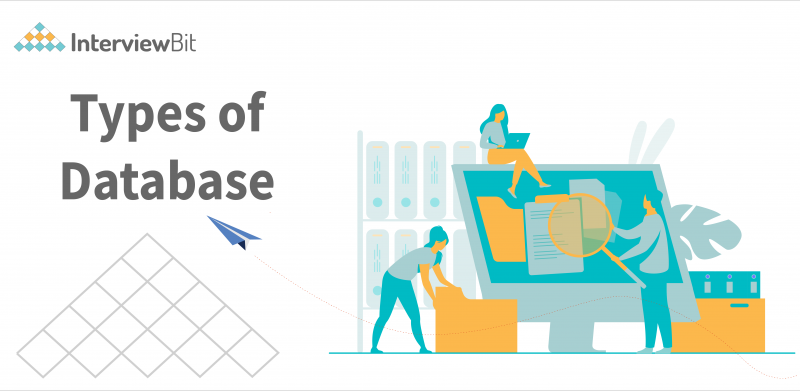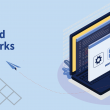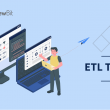In computer science and computer theory, a database is an organized collection of data. It is information stored in a structured and organized way so it can be easily accessed, searched, managed, and updated. There are various types of databases employed in the industry according to the needs of different organizations.
Databases are not restricted to just computer science. They are widely used in society and have been around since before the advent of computers. Its traces can be found as far back as 4000 BCE in Mesopotamia, where ancient Sumerians used clay tablets to store records of agricultural exchanges.
Different Types of Databases
Database technology has evolved over the years. Currently, in the industry, various types of databases are employed according to the needs of different organizations. Let us simplify the classification of databases for you so that you can learn everything there is to know about the various types of databases; their advantages, disadvantages, and use cases. The importance of selecting the correct type of database for your project cannot be understated. The different databases available provide different advantages, and often the situation dictates the optimal choice. Take NoSQL databases, for example. It is one of the most popular kinds of databases in the industry today, suitable for a wide variety of tasks. It is also open source. At the same time, though Relational Databases provide you with a solid relational model and data consistency. Should you pick one or the other? It is indeed a predicament, and often boils down to developer preference, but worry not, we are here to make the process of database selection simpler for you.
Confused about your next job?
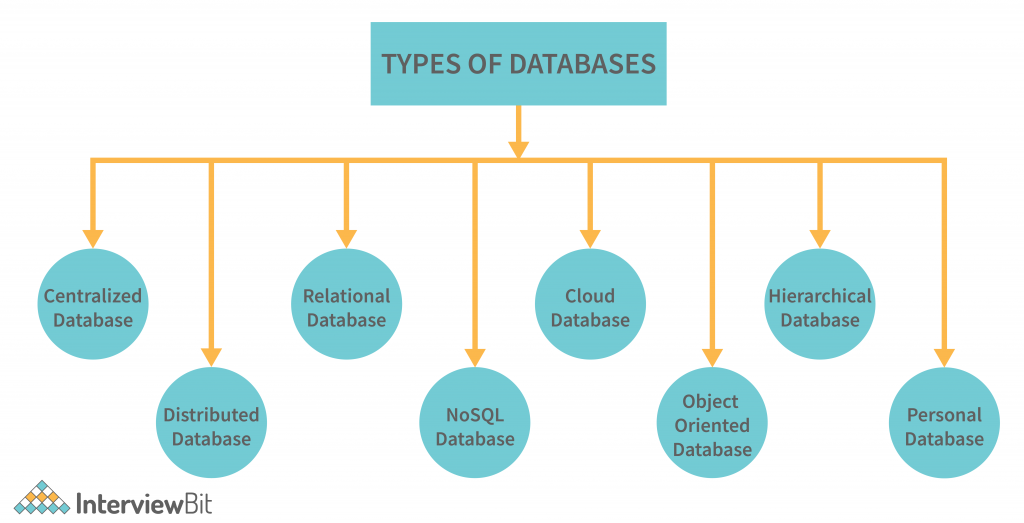
1. Centralized Database:
A centralized database is kept, managed, and accessed from a single place. This type of database is operated, modified, and managed from that location itself. You might ask, what is this location? This location is any database system or a centralized computer system. An internet connection is required to reach the centralized location (LAN, WAN, etc.). The centralized database is mainly used by institutions or organizations to maintain the data related to their operations. An example of a centralized database is a primary library that carries a central database of each library in a college/university.
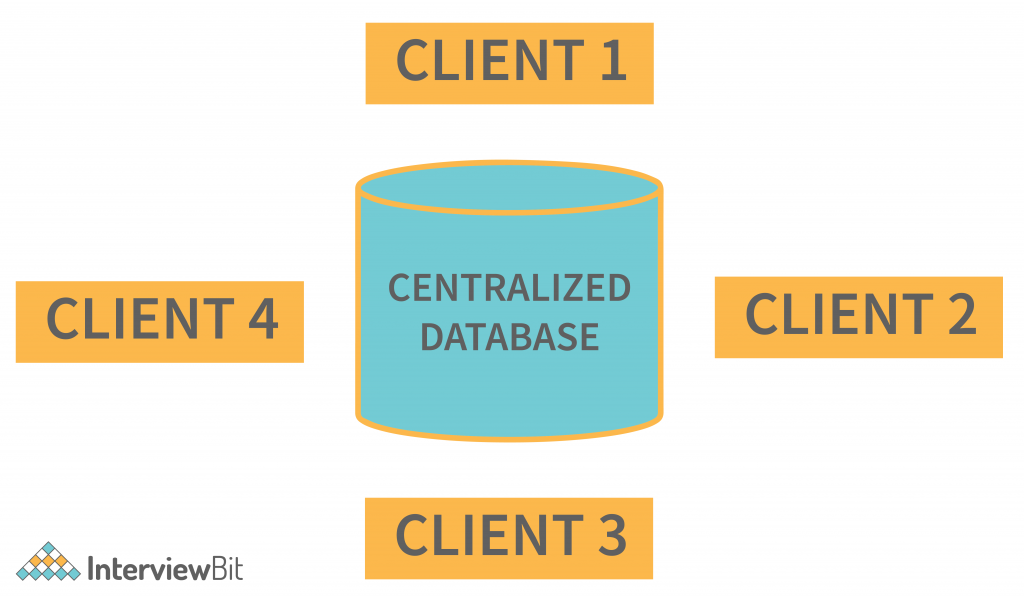
Advantages:
- Since all of the data is stored at a single location, it makes it easier to access and coordinate data.
- Because all data is stored in one location, the centralized database has relatively little data redundancy.
- It is less expensive than any other database accessible.
- It provides better data quality, therefore enabling organizations to establish superior data standards.
Disadvantages:
- The data traffic in the case of a centralized database is larger than other databases.
- If a system failure or critical breakdown occurs in the centralized system, the entire data may be destroyed.
- Updating such an extensive database system is not easy.
2. Distributed Databases:
In contrast to a centralized database, a distributed database is a type of database that consists of multiple databases that are connected and spread across different physical locations. Data stored in many physical places can be managed independently of one another. A computer network is used to communicate between the many physical sites. Examples of distributed databases are HBase, Apache Cassandra, Ignite, etc.
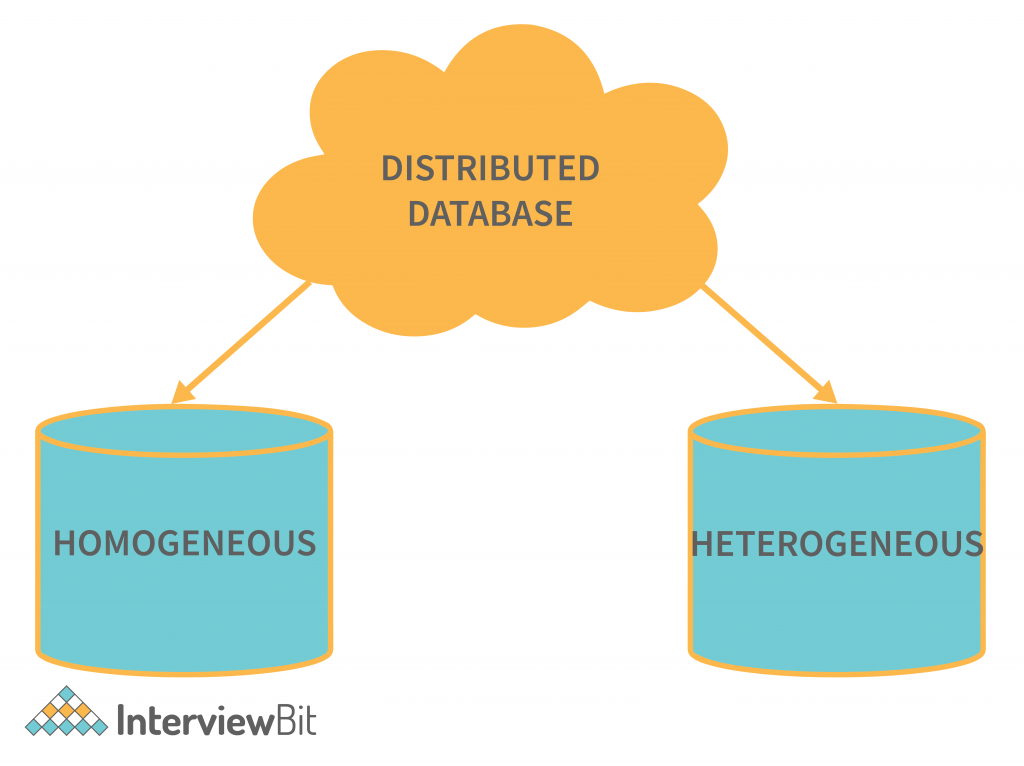
- Homogeneous Distributed Database: Database systems that run on the same operating system, use the same application process, and have the same hardware.
- Heterogeneous Distributed Database: Database systems that run on many operating systems, employ numerous application techniques, and contain a variety of hardware components.
Advantages:
- This type of database can be easily expanded as data is already spread across different physical locations.
- The distributed database can be easily accessed from different computer networks.
- Compared to centralized databases, this database is more secure.
Disadvantages:
- This type of database is expensive and difficult to maintain because of its complexity.
- In this type of database, it is difficult to provide a uniform view to the user since it is spread across different physical locations.
3. Relational Databases:
A relational database is a form of database that stores and makes data points connected and available. The relational paradigm serves as the foundation of relational databases. It is a simple and obvious method of displaying data in tables. This type of database stores data in the form of rows (tuples) and columns (attributes), which are concatenated to form a table (relation).
ACID properties and RDBMS: Four crucial properties define relational database transactions: atomicity, consistency, isolation, and durability – these are collectively referred to as ACID.
- All of the pieces that make up a full database transaction are defined by atomicity.
- The criteria for keeping data points in the proper condition after a transaction are defined as consistency.
- To minimize misunderstanding, isolation makes the consequences of a transaction opaque to others until it is committed.
- Durability guarantees that once a transaction is committed, data changes become permanent.
- The Relational Model: The relational model provides an application with a consistent manner of describing and querying data. One of the advantages of the relational model is that it allows you to write and query data in a database using Structured Query Language (SQL). SQL is a database query language that is based on relational algebra and enhances the efficiency of all database queries.
- Relational model and data consistency: Data consistency between applications and database copies is a strength of the relational paradigm (called instances). When you purchase anything on a shopping app, for example, you expect it to appear in your previous orders list right away. In this form of data consistency, relational databases excel, guaranteeing that many instances of a database always contain the same data.
Advantages:
- Relational databases have great speed due to the relational nature of storing data, ease, and simplicity.
- Relational databases are highly secure. Because a relational database has several tables, specific tables can be declared secret. Only authorized users will be able to access tables if they are secured with a username and password.
- This type of database has great simplicity. It does not need query processing or a complicated structure. It does not require complex queries. For handling, a simple SQL query is sufficient.
Disadvantages:
- The cost of establishing and maintaining a relational database is high.
- In terms of physical storage, this type of database is bulky, since it deals with rows and columns.
4. NoSQL Database:
NoSQL is a type of database that is non-tabular. This type of database stores data differently than a relational database. The main types of data stored in NoSQL databases are document, key-value, wide-column, and graph. This type of database provides flexible schemas and hence scales easily with large amounts of data and high user loads.
Properties of NoSQL database:
- Data is stored in documents for document databases like JSON (JavaScript Object Notation). Every document consists of a pair of fields and values. The values can typically be of various types including standard data types such as strings, numbers, arrays, booleans, or objects.
- Key-value databases are a simpler type of database wherein each item contains a key and value pair.
- Tables, rows, and dynamic columns are used to store data in wide-column databases.
- Graph databases store data in nodes and edges. Nodes typically store data points like people, places, or things, while edges store information about the relationship between the nodes.
Advantages:
- Productivity is enhanced in application development as the data is not required to be stored in a structured format.
- It is a good option for managing and handling voluminous data.
- It is highly scalable.
- Access to data from the database is fast through key-value pairs.
Disadvantages:
- There is no standard set of rules that govern NoSQL databases. The design and query languages of databases differ greatly between different NoSQL products. This is much more pronounced in NoSQL databases than in traditional SQL databases.
- Backups are a disadvantage in NoSQL databases. Some databases like MongoDB provide some tools for backup; however, these are not yet mature enough compared to traditional SQL databases.
5. Cloud Database:
In cloud databases, data is stored and executed on a cloud platform. It consists of many of the functions of a traditional database but with the added flexibility of cloud computing. Users are required to install software on a cloud infrastructure to implement the database. Cloud databases are very popular in the industry and some examples of this type of database are:
- Amazon Web Services (AWS)
- Microsoft Azure
- Oracle Autonomous Database
- Google Cloud SQL etc.
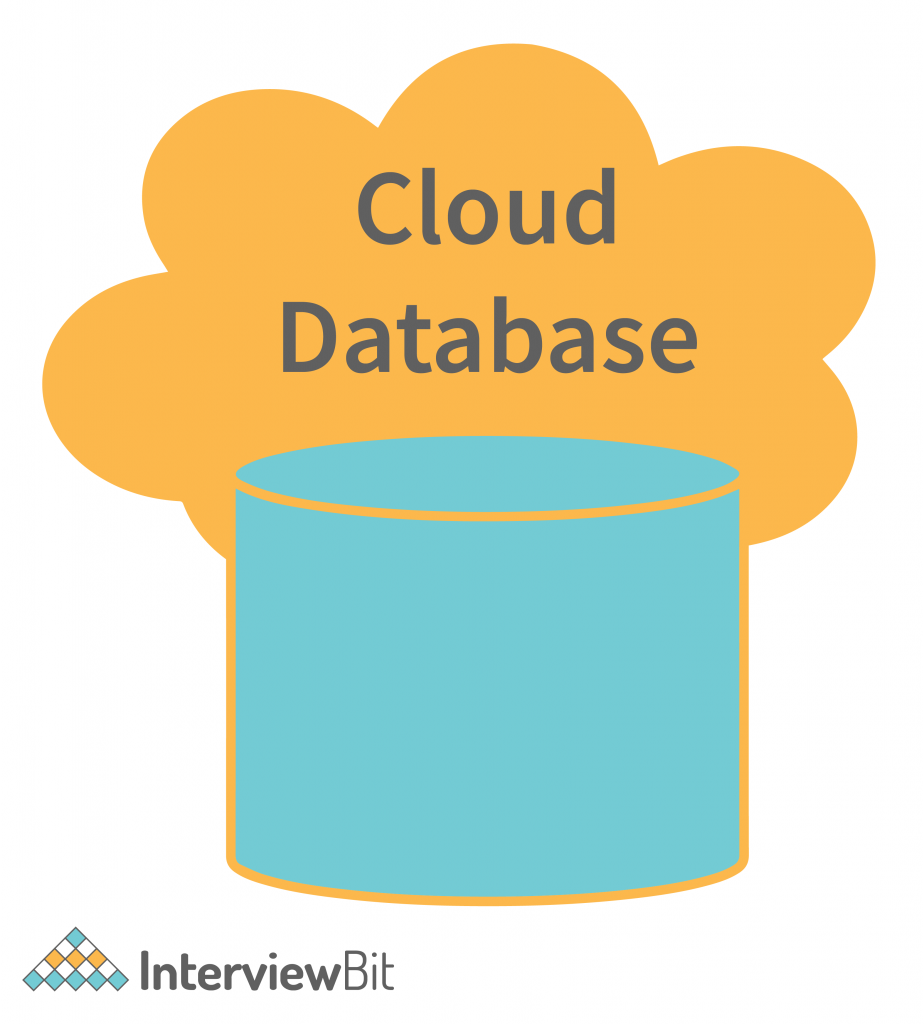
Advantages:
- Ease of access: Using a vendor’s API or web interface, users may access cloud databases from nearly anywhere.
- Scalability: To accommodate changing needs, cloud databases may scale up their storage capacity in real-time. Organizations just pay for the services that they utilize.
- Disaster recovery: Backups on distant servers keep data safe in the case of a natural disaster, equipment failure, or power loss.
Disadvantages:
- Risk of data confidentiality: There is always the possibility that other persons will get access to user data. As a result, data and cloud security must be excellent, or data confidentiality will be jeopardized.
- Dependent on Internet connection: The Internet is the only way to cloud computing. Automatically, access to your cloud computing machine will be terminated if there is no internet connection at your location or if the internet channel to the cloud provider is down.
6. Object-Oriented Database:
An object-oriented database (OOD) is a type of database that works with complex data objects. The objects used in this type of database mirror those used in object-oriented programming languages. Data objects are saved in the database with all of their characteristics using an OOD. Even if the application you’re executing is terminated, these items will remain in the OOD. When your program boots up, it retrieves an object along with its properties from the database. The user of the database is unaware of the procedure of saving and retrieving a complicated data item using an OOD.
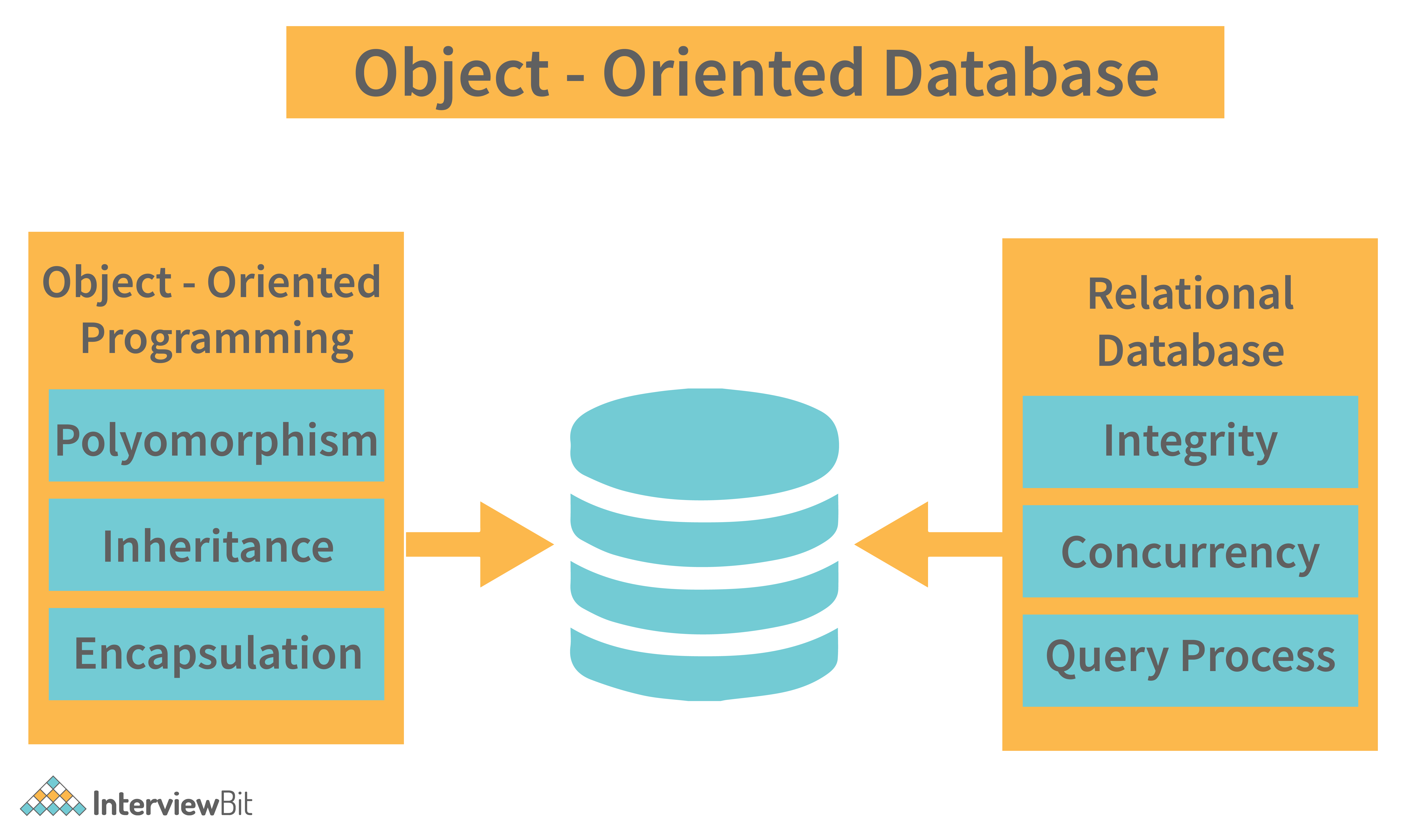
Advantages:
- With OODs, there are no slow “join” as you would have in an RDBMS. Instead, you have faster queries with complex data.
- The database structure is similar to the programmable objects, so the code is simpler and lighter on the machine.
Disadvantages:
- While OOD may be a great choice if you’re using an object-oriented programming language, the relative performance of simple database operations may be sub-optimal when compared to an RDBMS.
- The documentation and support for the OOD user community are relatively small as compared to the growing ecosystem of web development within the RDBMS space.
7. Hierarchical Database:
This is one of the oldest data models present in the community. In a hierarchical model, data is viewed as a collection of tables that form a hierarchical relation. The data is organized in a tree-like structure where each record consists of one parent record and several children. Each parent record can have multiple children, but each child record can have only one parent.
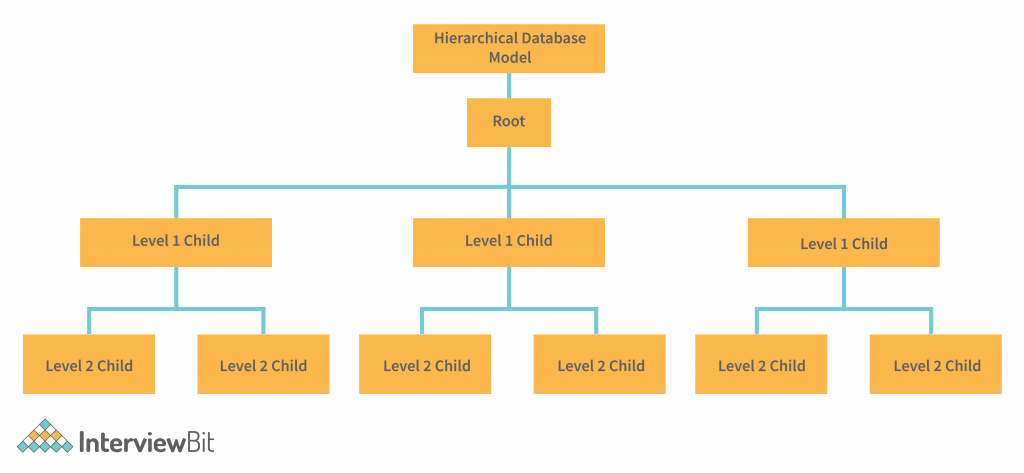
Advantages:
- The architecture of the database is such that the relationship between the layers is straightforward.
- As all the data is contained in a common database, data sharing becomes practical.
- It offers great data security; the hierarchical database model was the first ever to provide data security.
- Since there is always a link between parent and child, it offers good data integrity.
Disadvantages:
- Despite being straightforward in concept and design, this type of database is complex to implement.
- It lacks flexibility since changes in removing tables affect the entire database. Deletion of one segment may involuntarily lead to the deletion of all nodes under it.
- This model does not provide any specific standards, so implementation varies from case to case.
8. Personal Database:
Personal Database is a local database system that is intended for only one user to store and manage data from their system.
Advantages :
- Fast Processing: Since data is stored on a local computer, it can be processed faster and is reliable in terms of handling.
- Security: Data is stored in a personal system, hence there is no need for a special security arrangement for the data.
Disadvantages :
- Not Scalable: Since there is an inherent limit to the data stored on one system, this type of database is not scalable to big projects.
Conclusion
So many types of databases to choose from! Hopefully, in this article, we have been able to make you aware of just how many options there are available when it comes to choosing databases in today’s industry. Ranging from small businesses to huge corporate giants, all organizations have an inherent need for databases. The multiple options available in the industry are a simple reflection of just how many use cases there are for databases in different scenarios. With some careful consideration, you will be able to select the one that best suits your needs.
Additional Resources







 Join WhatsApp Group
Join WhatsApp Group
